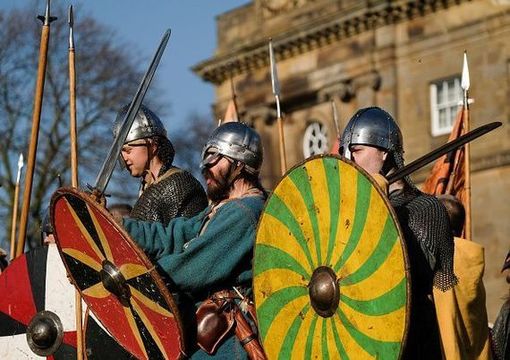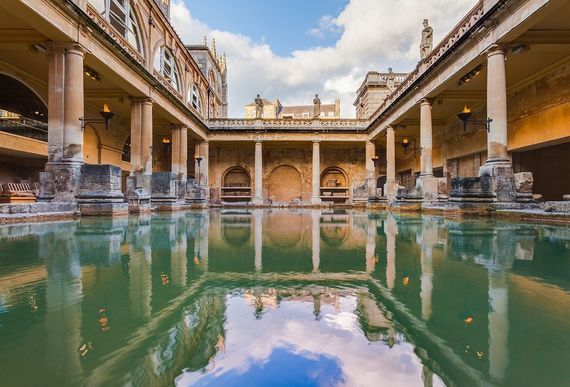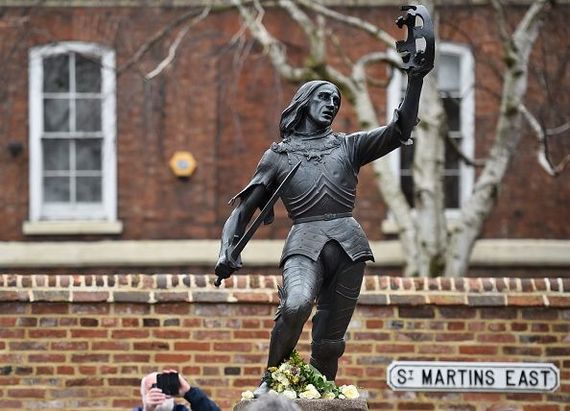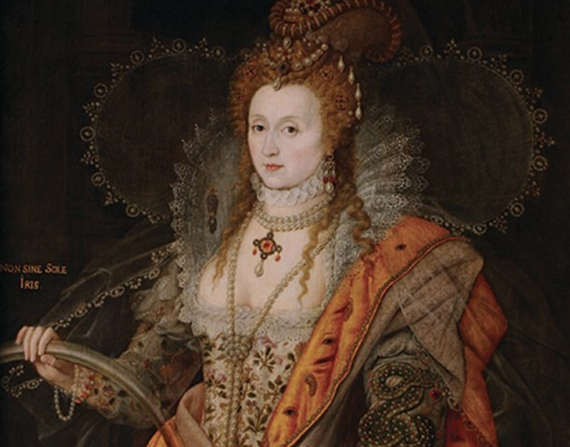
Vikings
One of the reasons inspiring our travel to Britain is its history – more than 2,000 years of it.
Heritage travel takes us to castles and cathedrals, stately homes and gardens, battlefields, mills and monuments through many centuries – or millennium. Everywhere we go, signboards, guidebooks and guides place these magnificent sites in the history of their times. Sometimes the frame of reference is to centuries (i.e. the 4th or the 18th century) and sometimes the year or decade (1846 or the 1630s).
Often, however, places and events are described by their historical era, named in common usage and histories for dynasties, dominant tribes and monarchs. These adjectives might describe furniture, architecture, fashion or weapons. Some terms we recognize with varied familiarity, but often we are scrambling our brain to place “Jacobean” or “Norman” in history.
Here is a just bit of reference, strolling through an overlapping timeline of England’s past.
The Celtic Era – 500 B.C – A.D. 43
A Celtic people who were the original “Britons” came to England from Northern Europe about 500 B.C. These Iron Age settlers lived in extended family farmsteads, almost small villages, spread across the countryside. They tended cattle, farmed the land, gardened and harvested wood. The Celts lived communally in large thatched roundhouses, built to last 150 years. Visit a Celtic village at Butser Ancient Farm in Hampshire or at the Welsh National History Museum in St. Fagans.
As defensive alliances, the Celts built sometimes elaborate hillforts with concentric earthwork ramparts. To these castles, the neighboring villagers would go in threatening times and conflict. The outlines of many of these hillforts remain today. The largest of these is Maiden Castle lying on the outskirts of Dorchester, Dorset. At times, several hundred people lived within. Like many of the Iron Age hillforts, Maiden Castle was abandoned with the coming of the Romans.
Roman Britain – AD 43 – circa 410

The Roman Baths, in Bath: Roman Britain – AD 43 – circa 410.
Beginning in AD43 the Roman Legions conquered and occupied what became the Roman province of Britannia. Rome brought trade, law and civil administration, as well as marvels of engineering in roads, aqueducts, walls, urban planning and architecture. Visit the famous Roman spa at Bath, Hadrian’s Wall or Fishbourne Roman Villa, for instance. There are Roman ruins all over England from 400 years of the Empire’s occupation. As the Roman Empire unraveled at home, Rome’s Legions and administrators were withdrawn from the island province early in the 5th century
Anglo-Saxon – circa 500 - 1066
Without the central government of Rome to stop them, Germanic tribes of northern Europe began drifting across the Channel. While they did not plan an organized conflict, piece by piece Angles, Saxons and Jutes defeated local Celtic tribes and pushed them West to Cornwall and Wales. The British Celts only reprieve was a generation under the legendary King Arthur. By the year 600, Britannia was a conglomeration of regional Germanic tribal kingdoms. While each of these kingdoms took a turn at predominance, it took almost 300 years for them to unite under Alfred the Great, King of Wessex and his line – for England as we know it.
Viking – 800-1042

Viking Era – 800-1042
There wasn’t really a time when the Vikings occupied and ruled all of England. For more than 200 years, though, Norwegian and Danish Vikings played a determinant role in the country. Beginning in late 700s, Scandinavian pirates raided up and down England’s North Sea coast, looting monasteries and other soft targets. Bit by bit, the Vikings came and stayed, with settlements built or taken over along the Eastern coast and navigable rivers. While King Alfred the Great fought them successfully and created a division across England known as the Danelaw, in 1016 the Vikings completed a conquest of England placing King Canute (or Cnut) on the English throne.
Norman – 1066-1154
If there is one date every British schoolchild knows, it is 1066 – the Battle of Hastings and the Norman Conquest. William, Duke of Normandy swept across the English Channel with a force of mercenary knights and defeated the Anglo-Saxon army of King Harold. During William the Conqueror’s reign and that of his family, the Normans introduced the Norman law and custom, the French language, stone castles and cathedrals.
Plantagenet – 1154-1485
King Henry II’s emblem was the broom plant – planta genesta. With his wife Eleanor of Aquitaine, Henry fathered the Plantagenet dynasty that through its several branches ruled England throughout the Middle Ages. Its early years brought the Crusades, King Richard the Lionheart, King John and Magna Carta. The Plantagenets ended with the death of King Richard III in the Battle of Bosworth Field in August 1485.
Tudor – 1485-1603

King Richard: Tudor – 1485-1603.
Henry Tudor, King Henry VII, was an unlikely king by right of conquest– a minor nobleman of Welsh dissent who pulled together an alliance that defeated the unpopular Yorkist King Richard. After a largely successful reign, his son becomes King Henry VIII in 1509 – a dashing, accomplished Renaissance prince. The first half of the 16th century was dominated by Henry VIII’s personal history.
Elizabethan – 1558-1603

Queen Elizabeth I: Elizabethan – 1558-1603.
On Henry VIII’s death in 1547, each of his older children got a turn on the throne, Edward VI (1547-1553) and Queen Mary (1553-1558). It was Elizabeth, daughter of Ann Boleyn, however, who left her mark and name on the second half of the 16th century. Under Queen Elizabeth the Protestant nature of the Church of England was secured and England became master of the European seas. This was the era of exploration across the North Atlantic and the early voyages charting North America. Elizabeth reigned over a Golden Age of music and literature, architecture and art. Unfortunately, the Virgin Queen did not leave a direct heir and the Tudor dynasty ended with her death.
Stuart –1603-1714
The royal line passed from Elizabeth to the son of her cousin Mary Queen of Scots. This was the Scottish Royal House of Stuart. He had become King James VI of Scotland on Mary’s death and now traveled to London to take England’s throne as King James I. He would never again return to Scotland.
Jacobean – 1603-1625
King James’s reign would be known as Jacobean (after the Latin, of course). Unhappily, James brought with him far more absolute ideas of monarchy (French) than the English were accustomed to. English monarchs had ruled with Parliament for several centuries. James’s insistence on his “royal prerogatives” made him highly unpopular. King James’s allies were the upper nobility and the Church episcopacy. With the increasingly Puritan House of Commons and gentry, he was increasingly at odds.
Caroline – 1625-1649
King Charles was woefully unprepared to be king on the death of his father. He inherited both King James’s high opinion of his Royal position and his unpopularity. In fact, his reign was marked by conflict between the Crown and a Puritan Parliament. By 1642, this had broken out into arms as the English Civil War. In years of bloody conflict the professional army of Parliament won key battles at Marston Moor and Naseby. King Charles I was taken prisoner, tried by a jury of the Commons and became the only British sovereign ever to be judicially executed on January 31, 1649.
The Commonwealth –1649-1660

Oliver Cromewell: The Commonwealth –1649-1660.
There was no precedent for a country without a monarch. At the war’s end, the Civil War’s military hero, Puritan cavalry General Oliver Cromwell was chosen by Parliament as the nation’s CEO with the title Lord Protector. While Cromwell proved an able administrator, the Puritan Parliament imposed a restrictive life on the people, forbidding entertainment and frivolity. The succession following Cromwell’s death in 1657 (by his son Richard) was not able to hold the hearts of the people or the Government. Parliament decided to invite the Stuarts back to the throne of England – but with conditions.
The Restoration – 1660-1714
Son of the beheaded Charles I, King Charles II returned from the Continent to a jubilant welcome. Charles II was only too happy to accept the limitations on his sovereignty and to leave the business of government to his ministers and Parliament. Known as “The Merry Monarch,” Charles’s restoration and example set off a national party that lasted for 30 years – reflected in the drama, literature, art and music of the era. On Charles II’s death in 1685, however, while the partying monarch left a number of illegitimate children, he had no legitimate heir. The crown passed to Charles’s brother, James II, who was a Catholic. After several years of tension, James II was deposed in favor of his Protestant daughter Mary and her husband William of Orange in the “Glorious Revolution” of 1688.
Hanoverian – 1714-1837
When the heirless Queen Anne died in 1714, most of the surviving Stuart royal family were Catholic. The Stuart line on England’s throne had come to an end. Parliament invited George, Elector of Hanover, and grandson of James I to take the throne of what was now the kingdom of Great Britain.
Georgian – 1714-1837
Great grandson of James I, George arrived in England not speaking English and didn’t bother to learn. “German Geordie” did not much care for his new kingdom, nor the people for him. His son, George II, was largely disengaged as monarch as well, relying on Prime Minister Sir Robert Walpole to guide the ship of state. with George II out of the country with much of the army, the Jacobite rebellion of 1745 was the last gasp of Stuart loyalists to return the Scottish dynasty to Britain’s throne.
King George III, of course, was the titular villain in the American War of Independence. In fact, he was a good and popular King and family man – by far the best of the Hanoverian Georges.
Read more
Regency – 1811-1820
With King George III suffering from psychosis and quite incapable of maintaining his Royal role, Parliament invested son George, subsequently George IV as Regent. The decade merited its own descriptive adjective. This George was everything his father was not – an extravagant, flashy voluptuary given to various excesses and vices. It was party time. The Prince did not reform much during his short reign as King George IV.
Victorian – 1837-1901

Queen Victoria: Victorian – 1837-1901.
Victoria was a sheltered teenager when she came to the British throne on the death of her uncle, William IV. The young queen answered the nation’s pressing question with her love match to Prince Albert and a succession of nine children (most ultimately married into Europe’s royal families). Albert’s early death from typhoid in 1861 plunged Victoria into 40 years of mourning. These were the years, however, when Britannia ruled the waves and the sun never set on the British Empire. During her 63-year reign (the longest until HM Queen Elizabeth II), Queen Victoria became the much-loved personification of the nation.
Edwardian – 1901-1910
Victoria’s oldest son, Edward, Prince of Wales waited a long time to become king. There were already ominous challenges to the British Empire when King Edward VII took the throne at 60 in January 1901. Britain was at the height of its power and the wealthiest country in the world. Outgoing, stylish and energetic, King Edward was popular at home and abroad. It was something of a Golden Age. His death at 68 in 1910 proved to mark the end of an era indeed. In a few short years, World War I would change life in Britain in unimaginable ways and the Empire would never recover.
The 20th century lies in living memory, in the lifetime of our grandparents, parents, and most of us. History has not quite settled over the 70-plus years since World War II. The one constant on the world stage through these long, eventful decades, of course, is Her Majesty the Queen. Prime Ministers and wars, technological revolutions, fashions and lifestyles have come and gone and she has been there with us. It seems we have indeed lived in a second Elizabethan Golden Age.





Comments